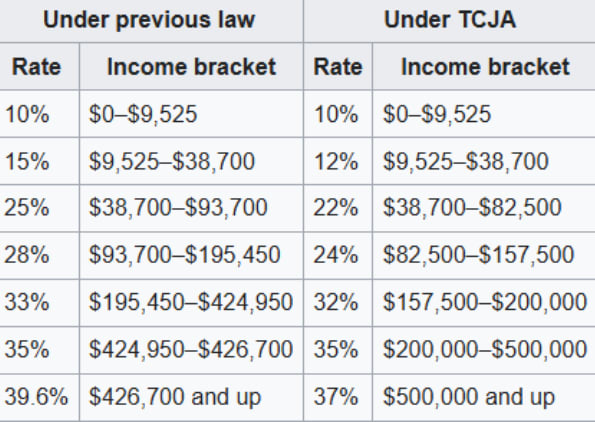Urgency is one of the most exploitable tactics in politics. The public always gets an earful of fearmongering, where if they fail to vote for someone, or vote at all, the newest social issue will reign chaos across the country. These are exaggerations, of course, but one of the only truly urgent topics is that of clean energy. According to Stanford University, all oil will run out by 2052. The solar energy company Infinity Renewables conservatively estimates that all of our fossil fuels will be depleted by 2060. This does not necessarily spell out doom for the human race as we know it, but it does beg the question: what then?
Different people have tried to answer this question in various ways. Some point toward renewable diesel. Others suggest an unapologetic, purely clean energy transition (solar, wind, hydroponic, and the like). Others suggest nuclear power.
Nuclear power is released through the process of nuclear fission, where Uranium-235 is split apart to release energy. Nuclear energy is, objectively speaking, a very proactive method of energy extraction. One kilogram of natural uranium contains about 20,000 times the energy density of a kilogram of coal. The Energy Information Administration says that renewables currently constitute 21.4% of domestically produced American energy, while nuclear power trails nearby at 18.6%. The kilowatts per hour of electricity production are similarly close, and with these percentages comes a particular debate. Which one should the American government and its taxpayers focus on?
I believe that there is little argument to be made. It is undeniable that nuclear energy has to reserve some sort of place in the American energy of the future. There are three main categories of rebuttals to this, which run along the lines of nuclear waste and storage, catastrophe, and alternatives.
Nuclear waste and storage are the obvious ones. While it may not be to the degree of the Simpsons, who depict nuclear waste as some radioactive green sludge, it is an unavoidable facet of the nuclear industry. That being said, nuclear waste is certainly not to be overlooked. To analogize this, consider the following: all of the nuclear waste that we have ever produced, during the long, expansive history of nuclear power in America (since 1956, to be exact), can fit onto a single football field. I do not mean to undermine the risk of waste leaks, but any argument of lacking storage should be put into perspective. As for nuclear leaks, we must simply understand that, as with any prospering technology, monetization is inevitable. Companies aren’t investing in nuclear power because of sheer goodwill, but because they see profit. Nuclear leaks are bad business—that’s why the helm of scientific innovation renders them almost impossible. Nuclear waste is vitrified, put into blocks of cement and locked away underground, or stored in spent (used) fuel pools. We must also realize that nuclear fuel is reusable—the International Atomic Energy Agency says that 96% of nuclear fuel can be recycled. Recycling programs are expensive but effective. The US has not yet committed to them, but it can certainly take examples from nuclear recycling programs in France, Japan, or the UK. I don’t proclaim nuclear recycling as ideal, but it stands as proof that the nuclear waste and storage argument isn’t nearly as one-sided as one might think.
The idea of “bad business” also holds true for the argument of catastrophes or nuclear accidents. The threat of nuclear accidents is a significant player in the public perception of nuclear energy, and needlessly so. If a nuclear reactor explodes, then that wouldn’t reflect well on the company that built it. The National Institute of Medicine says that the public health risk of radiation that comes from a coal energy chain is eighteen times greater than that of a nuclear energy chain. Our World in Data states that “Nuclear energy, for example, results in 99.9% fewer deaths than brown coal; 99.8% fewer than coal; 99.7% fewer than oil; and 97.6% fewer than gas.” Even when we include the greatest nuclear catastrophes like Fukushima or Chernobyl, nuclear power results in 0.03-0.04 deaths per terawatt hour, while the rate for coal is 24.6. Additionally, nuclear accidents caused by faulty equipment or oversight (like the USSR-grade Chernobyl plant, which was also curated by a level of inexperience the US would never allow in a plant operator) should not even be regarded as exceptions but as relics of the past. Especially in the age of automation and innovation, human error and poor equipment are no excuse not to invest in a sustainable, productive source of energy.
I include the argument of weaponization as part of the catastrophe. It is very difficult, if not impossible, to weaponize nuclear power plants. The fuel that goes into uranium is completely different from the fuel required to make a nuclear weapon—you need a certain level of uranium enrichment to make a weapon. According to the book “Energy or Extinction?”, a nuclear reactor is no more likely to explode than a chocolate bar. As for radiation, the Argonne National Laboratory declares, “Only 0.005% of the average American’s yearly radiation dose comes from nuclear power; 100 times less than we get from coal, 200 times less than a cross-country flight, and about the same as 1 banana per year.”
The strongest case that can be made against nuclear energy is the argument for alternatives. Some believe that renewables like solar or wind power are safer, cleaner, and cheaper than nuclear energy, at least in the long run. All of that is true. The levelized cost of energy for nuclear power was $110 per megawatt hour in 2023, while wind power was $40 and expected to drop to $35 by 2050, and solar was $55 and expected to drop to $25. Renewables have considerably less risk in terms of mining, and you’ve never heard of anybody debating whether or not a solar panel can be blown up. The reason I mention this is that nuclear power can, should, and will serve as a transition to renewables. A study by Barron and Hill estimates that the transition to low-carbon energy pathways would be 50% more expensive if nuclear power were not used. To put this in a more digestible scale, an annual renewable transition would cost us about 4.5 trillion dollars collectively. If we allow nuclear power into the mix, it would bring down the cost to four trillion dollars—a considerably better bargain for American taxpayers. In order to fathom this, consider land mass. If there is one advantage that renewables do not rival nuclear power with, it is land efficiency. The US Department of Energy says that you would need three to four one-gigawatt renewable plants to match the energy output of a single nuclear plant. It should be clear that the energy infrastructure and power grids that nuclear power can create, most of which could be repurposed according to the needs of renewable energy, are more reasonable than just jumping to renewables.
Ultimately, it is time to push through the mysticism that surrounds nuclear energy. Even if it is just a gateway to renewables, the role of nuclear energy is monumental. Every decision, even the most trivial one, carries a certain set of consequences. But refusing nuclear energy allows the onslaught of the greatest consequence of all—America marching forward without enough energy to feed it.
WORKS CITED:
https://mahb.stanford.edu/library-item/fossil-fuels-run/
https://infinity-renewables.com/162-2/
https://www.eia.gov/tools/faqs/faq.php?id=427&t=3
https://www.energy.gov/sites/prod/files/2019/01/f58/Ultimate%20Fast%20Facts%20Guide-PRINT.pdf
https://pubmed.ncbi.nlm.nih.gov/9594114/
https://ourworldindata.org/safest-sources-of-energy
https://www.ne.anl.gov/About/nuclear-energy/why-afraid-nuclear.html
https://www.worldnuclearreport.org/Power-Play-The-Economics-Of-Nuclear-Vs-Renewables
https://environment-review.yale.edu/true-long-term-cost-nuclear-power











